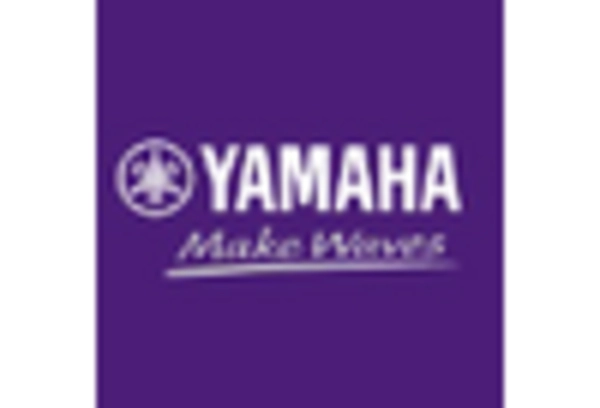Expansion of Streaming Services
The audio equipment market in Canada was significantly influenced by the expansion of streaming services. With platforms like Spotify, Apple Music, and Tidal gaining traction, consumers are increasingly investing in audio equipment that enhances their streaming experience. This shift has led to a surge in demand for wireless speakers and high-quality headphones, as users seek to enjoy their favorite music with optimal sound clarity. Recent data indicates that the revenue generated from streaming services in Canada has grown by over 20% in the past year, which correlates with increased sales in the audio equipment market. As streaming continues to dominate the music industry, the demand for compatible and high-performance audio devices is likely to persist, driving further growth in this sector.
Increased Focus on Personalization
The audio equipment market in Canada is experiencing a shift towards personalization, as consumers seek products that cater to their individual preferences. This trend is reflected in the growing popularity of customizable headphones and speakers, which allow users to tailor sound profiles to their liking. Recent market analysis indicates that personalized audio products have seen a sales increase of approximately 18% over the past year. This focus on personalization not only enhances user satisfaction but also fosters brand loyalty, as consumers are more likely to invest in products that resonate with their unique tastes. As the audio equipment market continues to evolve, manufacturers are likely to prioritize customization options, further driving growth and innovation in this sector.
Rise of Home Entertainment Systems
The audio equipment market in Canada witnessed a surge in the popularity of home entertainment systems. As consumers increasingly prioritize home-based leisure activities, the demand for comprehensive audio solutions has escalated. This trend is evidenced by a reported 25% increase in sales of home theater systems and soundbars over the past year. The integration of advanced technologies, such as Dolby Atmos and surround sound capabilities, enhances the appeal of these systems, making them a staple in modern households. Furthermore, as Canadians invest more in their home environments, the audio equipment market is likely to benefit from this shift, with manufacturers focusing on creating innovative products that cater to the evolving preferences of consumers.
Growing Demand for High-Quality Sound
The audio equipment market in Canada experienced a notable increase in demand for high-fidelity sound systems. Consumers are increasingly discerning, seeking superior audio quality for both personal and professional use. This trend is reflected in the rising sales of premium headphones and speakers, which have seen a growth rate of approximately 15% annually. The proliferation of high-resolution audio formats further fuels this demand, as audiophiles and casual listeners alike desire an immersive listening experience. As a result, manufacturers are compelled to innovate and enhance their product offerings, leading to a competitive landscape within the audio equipment market. This focus on sound quality not only drives sales but also encourages advancements in technology, thereby shaping the future of audio equipment in Canada.
Technological Advancements in Audio Equipment
The audio equipment market in Canada was significantly shaped by rapid technological advancements. Innovations such as noise-cancellation technology, Bluetooth connectivity, and smart features are becoming increasingly prevalent in audio devices. These advancements not only enhance user experience but also attract a broader consumer base. For instance, the introduction of smart speakers with voice assistant capabilities has revolutionized how consumers interact with audio equipment. Recent statistics suggest that smart speaker sales have increased by 30% in the last year, indicating a strong consumer preference for integrated technology. As manufacturers continue to invest in research and development, the audio equipment market is poised for further growth, driven by the demand for cutting-edge features and improved functionality.
















Leave a Comment